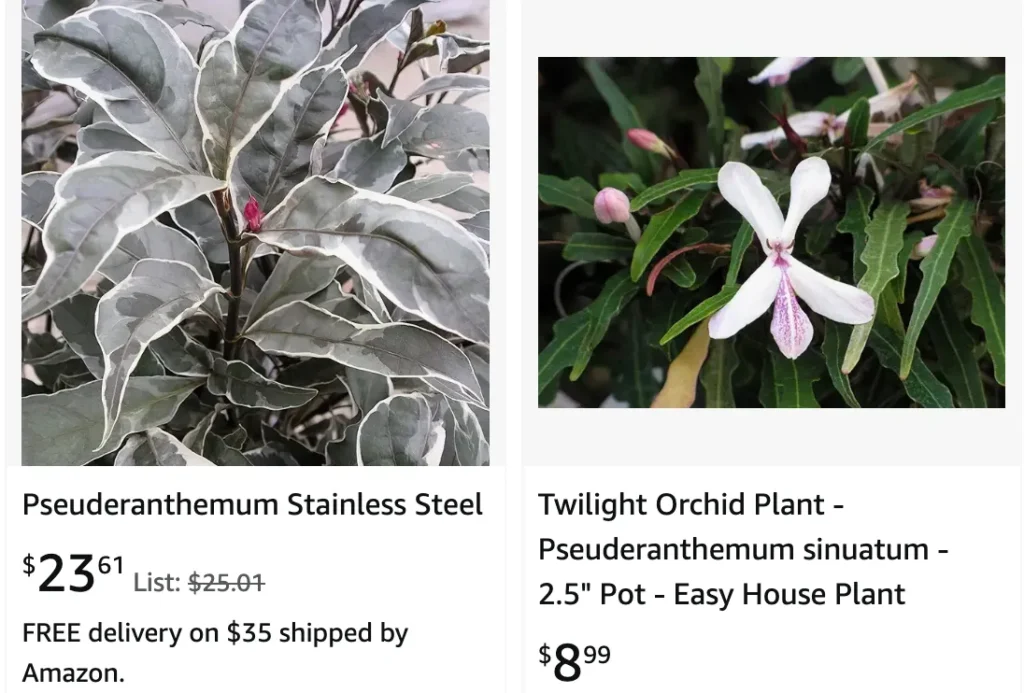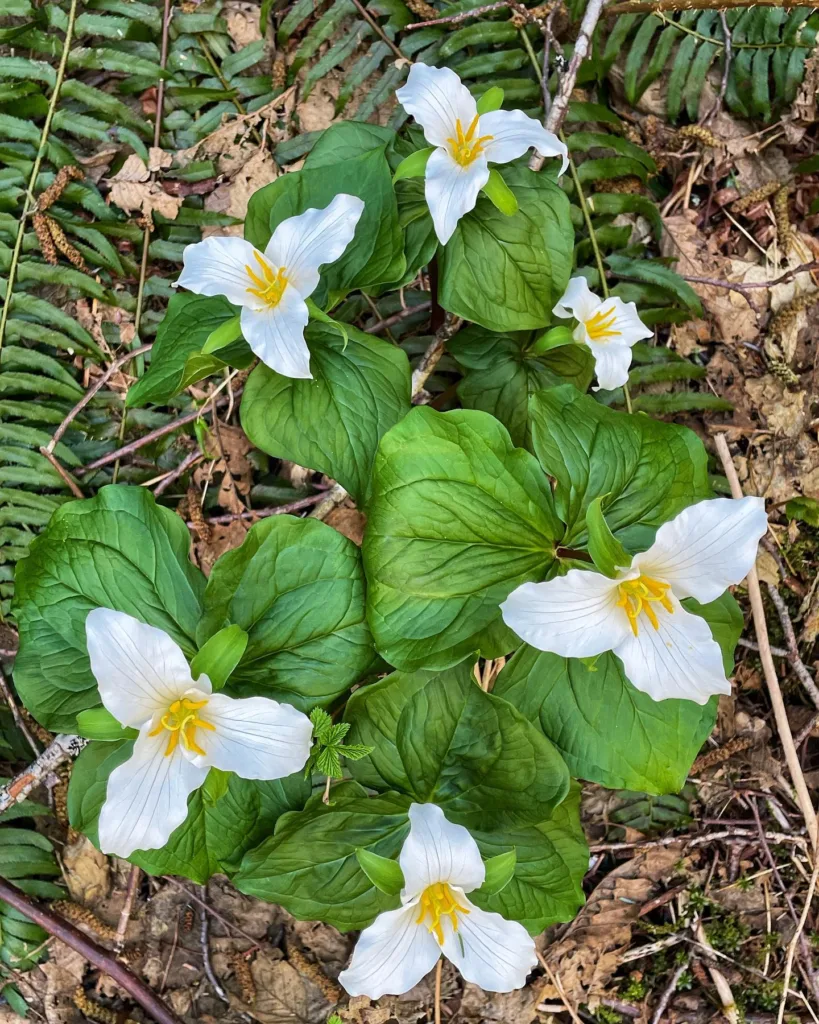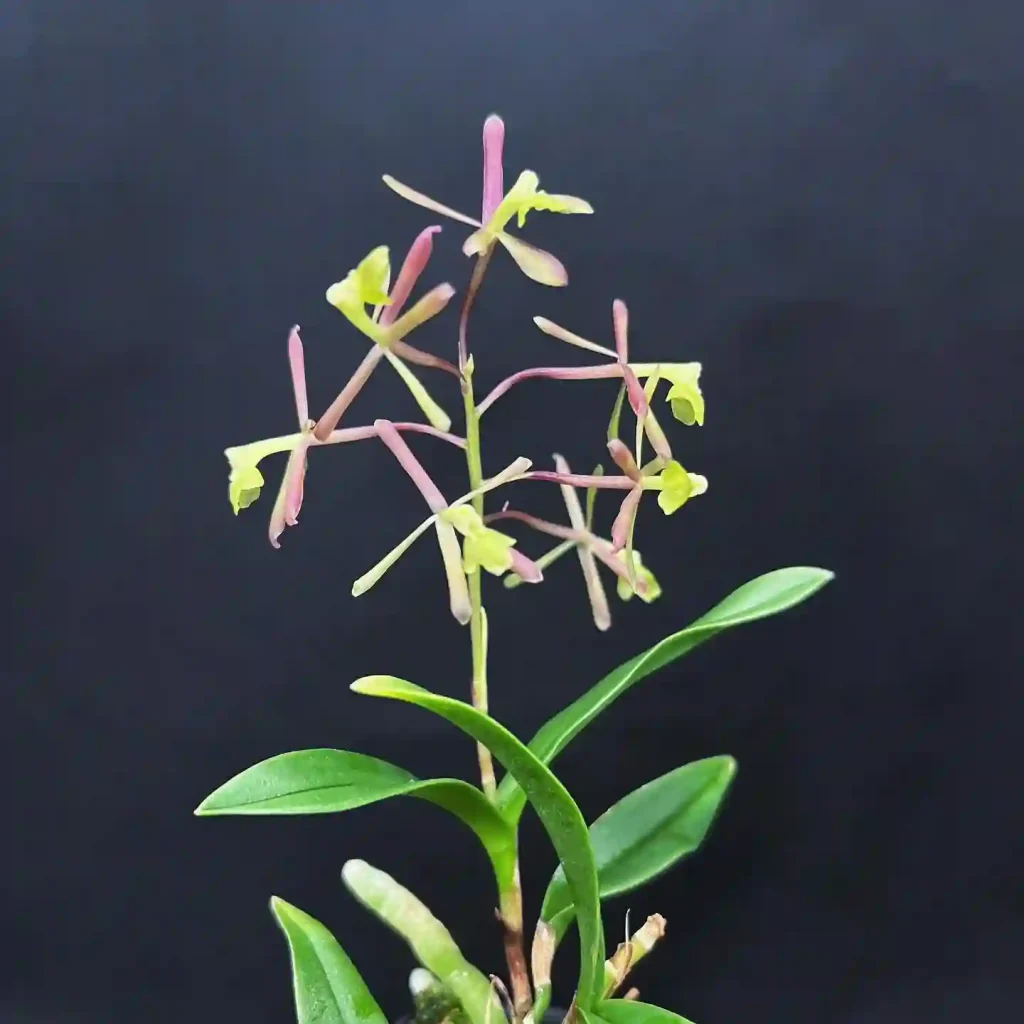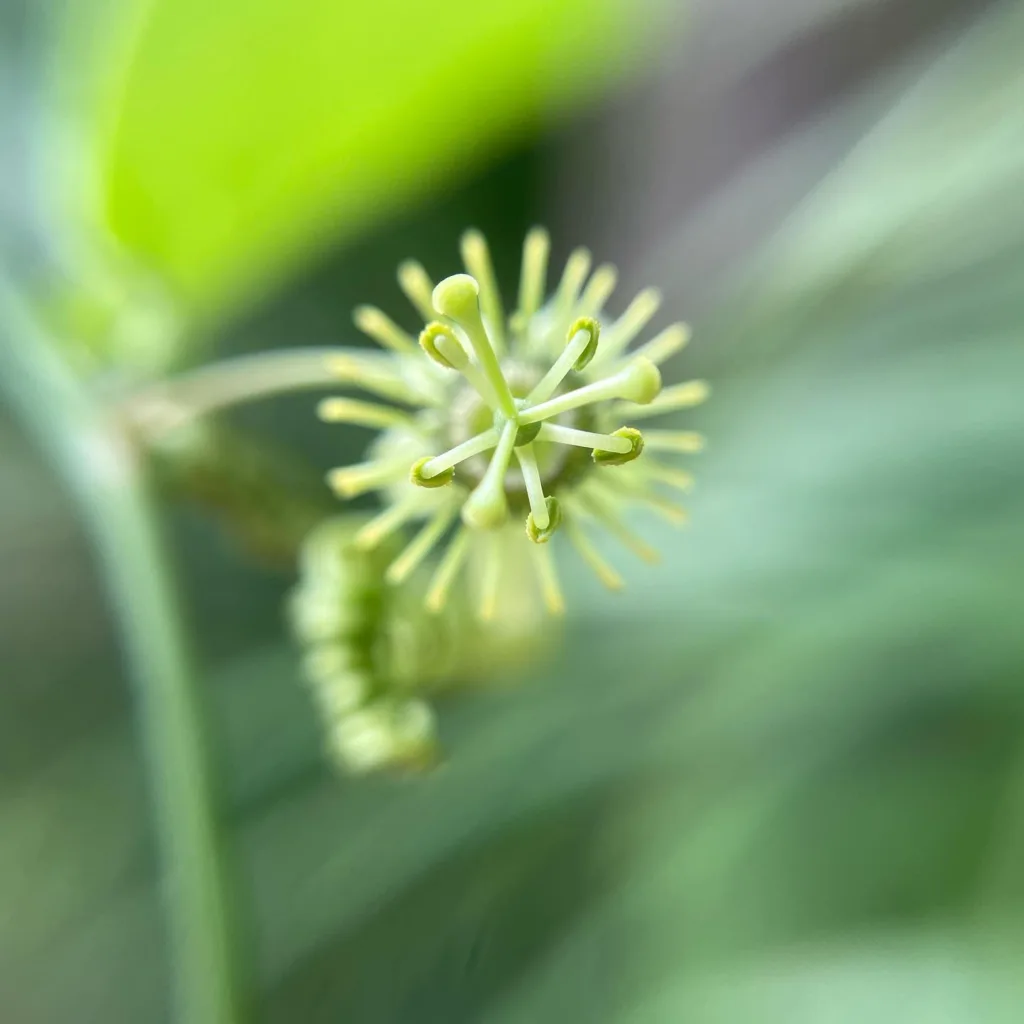
Pseuderanthemum: A Vibrant Addition to Your Indoor Oasis
For the past few years, I’ve been on a mission to transform my apartment into a lush indoor jungle. Experimenting with various plants has become a hobby, and one of my recent discoveries is the captivating Pseuderanthemum. These stunning tropical plants, with their vibrant foliage and striking blooms, have quickly become a favorite.
If you’re looking for an eye-catching addition to your indoor space, look no further than the Pseuderanthemum. In this article, I’ll share my experiences and everything I’ve learned about caring for these beauties.
What is Pseuderanthemum?
Pseuderanthemum belong to the Acanthaceae family, meaning “false Eranthemum” due to its resemblance to its close relative, boasts a diverse range of species. They come in a kaleidoscope of colors, from emerald green to deep burgundy, with some varieties even featuring variegated leaves. Their blooms, typically spikes or clusters of small flowers, can range from vibrant pink and purple to a soft, calming white.
These tropical wonders thrive in warm, humid environments. They’re native to Southeast Asia and thrive in regions with consistent temperatures and ample moisture.
Pseuderanthemum species
- Pseuderanthemum alatum (Nees) Radlk.
- Pseuderanthemum albiflorum (Hook.) Radlk.
- Pseuderanthemum album (Roxb.) Radlk.
- Pseuderanthemum angustifolium Ridl.
- Pseuderanthemum armitii S.Moore
- Pseuderanthemum arunachalense D.Borah, R.Kr.Singh & Taram
- Pseuderanthemum aubertii Benoist
- Pseuderanthemum australe M.C.Rodrigues & V.C.Souza
- Pseuderanthemum bibracteatum Fosberg
- Pseuderanthemum bicolor (Schrank) Radlk.
- Pseuderanthemum bracteatum J.B.Imlay
- Pseuderanthemum bradtkei S.Moore
- Pseuderanthemum breviflos (C.B.Clarke) Ridl.
- Pseuderanthemum campylosiphon Mildbr.
- Pseuderanthemum candidum (Ridl.) Ridl.
- Pseuderanthemum caudifolium (C.B.Clarke) Ridl.
- Pseuderanthemum chaponense Leonard
- Pseuderanthemum chilianthium Leonard
- Pseuderanthemum chocoense Leonard
- Pseuderanthemum cinnabarinum (Wall.) Radlk.
- Pseuderanthemum cladodes Leonard
- Pseuderanthemum comptonii S.Moore
- Pseuderanthemum confertum S.Moore
- Pseuderanthemum confusum Merr.
- Pseuderanthemum congestum (S.Moore) Wassh.
- Pseuderanthemum coudercii Benoist
- Pseuderanthemum crenulatum (Wall. ex Lindl.) Radlk.
- Pseuderanthemum ctenospermum Leonard
- Pseuderanthemum curtatum (C.B.Clarke) Merr.
- Pseuderanthemum cuspidatum (Nees) Radlk.
- Pseuderanthemum dawei Turrill
- Pseuderanthemum detruncatum (Nees & Mart.) Radlk.
- Pseuderanthemum diachylum Leonard
- Pseuderanthemum diantherum (Roxb.) I.M.Turner
- Pseuderanthemum dispermum Milne-Redh.
- Pseuderanthemum diversifolium (Miq.) Radlk.
- Pseuderanthemum eberhardtii Benoist
- Pseuderanthemum ellipticum Turrill
- Pseuderanthemum exaequatum (Nees) Radlk.
- Pseuderanthemum fasciculatum (Kuntze) Leonard
- Pseuderanthemum floribundum T.F.Daniel
- Pseuderanthemum fruticosum (Elmer) Merr.
- Pseuderanthemum galbanum Leonard
- Pseuderanthemum glomeratum J.B.Imlay
- Pseuderanthemum graciliflorum (Nees) Ridl.
- Pseuderanthemum grandiflorum (Benth.) Domin
- Pseuderanthemum guerrerense Cruz Durán & S.Valencia
- Pseuderanthemum haikangense C.Y.Wu & H.S.Lo
- Pseuderanthemum heterophyllum (Nees) Radlk.
- Pseuderanthemum hildebrandtii Lindau
- Pseuderanthemum hirtipistillum (C.B.Clarke) Ridl.
- Pseuderanthemum hispidulum (Nees) Radlk.
- Pseuderanthemum hookerianum (Nees) V.M.Baum
- Pseuderanthemum hooveri Wassh.
- Pseuderanthemum huegelii (Burkill) K.Schum.
- Pseuderanthemum hylophilum Leonard
- Pseuderanthemum idroboi Leonard
- Pseuderanthemum imlayae R.Kr.Singh
- Pseuderanthemum incisum Benoist
- Pseuderanthemum inclusum Hosok.
- Pseuderanthemum interruptum (Kunth) V.M.Baum
- Pseuderanthemum jundiaiense M.C.Rodrigues & V.C.Souza
- Pseuderanthemum katangense Champl.
- Pseuderanthemum kingii (C.B.Clarke) Ridl.
- Pseuderanthemum lanceolatum (Ruiz & Pav.) Wassh.
- Pseuderanthemum lanceophyllum Choopan
- Pseuderanthemum lanceum (Nees) Radlk.
- Pseuderanthemum lapathifolium (Vahl) B.Hansen
- Pseuderanthemum latifolium (Vahl) B.Hansen
- Pseuderanthemum laxiflorum (A.Gray) F.T.Hubb.
- Pseuderanthemum leiophyllum Leonard
- Pseuderanthemum leonardii M.C.Rodrigues & V.C.Souza
- Pseuderanthemum leptanthum (C.B.Clarke) Lindau
- Pseuderanthemum leptorhachis Lindau
- Pseuderanthemum leptostachys Leonard
- Pseuderanthemum leptostachyum (Nees) Radlk.
- Pseuderanthemum liesneri T.F.Daniel
- Pseuderanthemum longifolium (G.Forst.) Guillaumin
- Pseuderanthemum longistylum J.B.Imlay
- Pseuderanthemum ludovicianum (Büttner) Lindau
- Pseuderanthemum macgregorii Lindau
- Pseuderanthemum macrophyllum (Kuntze) Radlk.
- Pseuderanthemum maculatum (G.Lodd.) I.M.Turner
- Pseuderanthemum maguirei Leonard
- Pseuderanthemum melanesicum Gâteblé, Ramon & Butaud
- Pseuderanthemum metallicum Hallier
- Pseuderanthemum micranthum Leonard
- Pseuderanthemum minutiflorum (Elmer) Merr.
- Pseuderanthemum modestum (Nees ex Mart.) Radlk.
- Pseuderanthemum muelleri-fernandii Lindau
- Pseuderanthemum orientalis Wassh.
- Pseuderanthemum pacificum (Engl.) Lindau
- Pseuderanthemum palauense Fosberg & Sachet
- Pseuderanthemum paniculatum (Blume) Radlk.
- Pseuderanthemum parishii (T.Anderson) Lindau
- Pseuderanthemum pelagicum (Seem.) P.S.Green
- Pseuderanthemum pihuamoense T.F.Daniel
- Pseuderanthemum pittieri Leonard
- Pseuderanthemum poilanei Benoist
- Pseuderanthemum polyanthum (C.B.Clarke ex Oliv.) Merr.
- Pseuderanthemum potamophilum Leonard
- Pseuderanthemum praecox (Benth.) Leonard
- Pseuderanthemum pubescens Choopan & Grote
- Pseuderanthemum pumilum Lindau
- Pseuderanthemum racemosum (Roxb.) Radlk.
- Pseuderanthemum repandum (G.Forst.) Guillaumin
- Pseuderanthemum riedelianum (Nees) Radlk.
- Pseuderanthemum selangorense (C.B.Clarke) Ridl.
- Pseuderanthemum shweliense (W.W.Sm.) C.Y.Wu & C.C.Hu
- Pseuderanthemum siamense J.B.Imlay
- Pseuderanthemum sneidernii Leonard
- Pseuderanthemum sorongense Bremek.
- Pseuderanthemum standleyi Leonard
- Pseuderanthemum stenosiphon Leonard
- Pseuderanthemum stenostachyum (Leonard) V.M.Baum
- Pseuderanthemum subauriculatum Mildbr.
- Pseuderanthemum subviscosum (C.B.Clarke) Stapf
- Pseuderanthemum sumatrense (Ridl.) Merr.
- Pseuderanthemum sylvestre Ridl.
- Pseuderanthemum teijsmannii (T.Anderson ex C.B.Clarke) Stapf
- Pseuderanthemum tenellum (Benth.) Radlk.
- Pseuderanthemum thailandicum Choopan & Grote
- Pseuderanthemum thelothrix Leonard
- Pseuderanthemum tomentellum Bremek.
- Pseuderanthemum tonkinense Benoist
- Pseuderanthemum tunicatum (Afzel.) Milne-Redh.
- Pseuderanthemum usambarensis Vollesen
- Pseuderanthemum variabile (R.Br.) Radlk.
- Pseuderanthemum velutinum Lindau
- Pseuderanthemum verapazense Donn.Sm.
- Pseuderanthemum verbenaceum (Nees & Mart.) Radlk.
- Pseuderanthemum viriduliflorum Bremek.
- Pseuderanthemum weberbaueri Mildbr.
How to Grow Pseuderanthemum?
So, how can you cultivate this tropical gem in your own home? Here’s what I’ve learned:
Light: Pseuderanthemum prefers bright, indirect sunlight. Avoid harsh, direct sun, which can scorch the leaves. A spot near an east-facing window is ideal.
Temperature: These plants love warmth. Aim for a consistent temperature range between 65°F (18°C) and 75°F (24°C). Avoid placing them near drafts or air conditioning vents.
Humidity: As mentioned earlier, Pseuderanthemum thrives in humidity. Grouping your plants together or using a pebble tray filled with water can help create a more humid microclimate.
Watering: Finding the right watering balance is key. Water your Pseuderanthemum when the top inch of soil feels dry to the touch. Avoid overwatering, which can lead to root rot.
Soil: Opt for a well-draining potting mix. A mixture of potting soil, perlite, and orchid bark can provide good drainage and aeration.
Fertilizer: During the growing season (spring and summer), a balanced fertilizer diluted to half strength can be applied once a month. Hold off on fertilizing during the winter months.
How to propagate Pseuderanthemum?
Pseuderanthemums are relatively easy to propagate, allowing you to expand your collection or share the beauty with friends. Here are two methods I’ve found successful:
- Stem Cuttings: Take a healthy stem tip with at least 2-3 nodes. Remove the lower leaves and dip the cut end in rooting hormone (optional). Plant the cutting in a pot with moist potting mix and place it in a warm, humid location. Keep the soil moist but not soggy, and expect roots to develop within a few weeks.
- Division: If your Pseuderanthemum has become overgrown, you can divide it during spring. Carefully remove the plant from its pot and gently separate the root ball into sections, each with healthy stems and leaves. Repot each division in individual pots with fresh potting mix.
Is Pseuderanthemum a Perennial?
Technically, Pseuderanthemum isn’t a true perennial in most temperate climates. However, with proper care, it can live for several years indoors. Here are some tips to extend its lifespan:
- Prune leggy stems to encourage bushier growth.
- Repot your Pseuderanthemum every 1-2 years into a slightly larger pot with fresh potting mix.
Living with Pseuderanthemum: A Rewarding Experience
Pseuderanthemums are captivating plants that add a touch of the tropics to any indoor space. With their vibrant foliage, beautiful blooms, and relatively easy care requirements, they’re a perfect choice for plant enthusiasts of all levels. So, why not bring a bit of the tropics indoors and cultivate your very own Pseuderanthemum haven?
If i die, water my plants!



